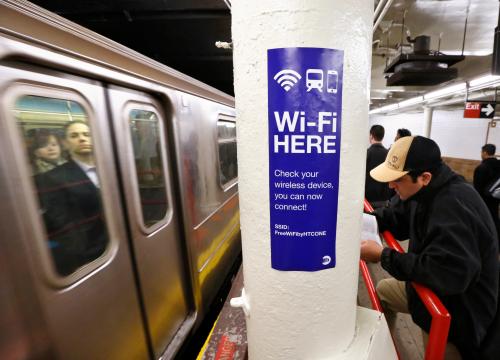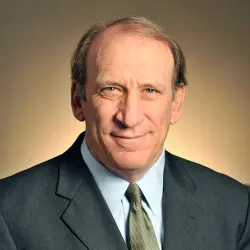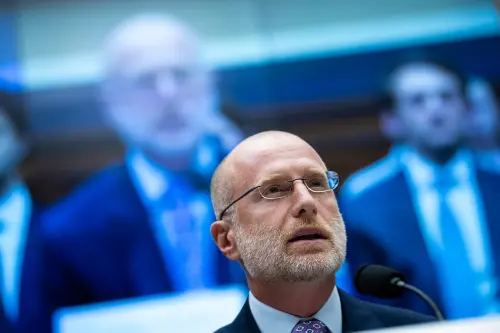Despite tens of billions of dollars of federal subsidies for rural communications networks, rural broadband connectivity remains a vexing problem. While the numbers show improvement from prior years, the most recent broadband report from the Federal Communications Commission (FCC) found that 39 percent of the rural population (23.4 million Americans), compared to just 4 percent of the urban population, lacked access to what the FCC regards as basic fixed broadband service—25 megabits per second (Mbps) up/3 Mbps down. Even more starkly, 20 percent lacked access even to service at the previous, now outdated, broadband definition of 4/1 Mbps. This lack of access has a number of negative implications for economic development in rural America. For example, as the FCC report noted, “small businesses tend to subscribe to mass-market broadband service. Thus, the rural-urban disparity in deployment of these broadband services also disproportionately impacts the ability of small businesses operating in rural areas to successfully compete.”
With the Trump Administration dangling the prospect of a $1 trillion infrastructure program, now is the time to consider whether a new approach might more effectively address the rural broadband problem. After all, whatever one thinks of the current position of the United States, it is hard to envision how, in the 21st century global information economy, any country can be great without great broadband to rural as well as urban communities.
To be fair, in the last few years the FCC has taken a number of positive steps to meet the congressional mandate of universal access, most significantly by modernizing the old, voice-based universal service program into the Connect America Fund, which now is focused on bringing broadband to the unserved.
But the FCC’s efforts have a structural flaw. For various historical reasons, the agency has taken a one-size-fits-all approach to universal service, providing ongoing funding even in areas that only need a capital investment to deploy a broadband-capable network. One of the outcomes of funding in relatively small, annual amounts is that it can take years before carriers recoup their capital investments. Thus, carriers that can earn a greater return on investment in urban areas will take an incremental approach in rural areas, slowing next-generation deployments. Another outcome of this approach is that it creates an incentive for broadband providers to make decisions based on what they believe the government will fund, rather than on what consumers want.
President Trump’s proposed infrastructure program is one issue on which there appears to be a bipartisan opportunity. Indeed, Congressional Democrats recently proposed their own $1 trillion infrastructure program. If these proposals move forward, they create an opportunity to at least experiment with a capital expense solution, driven by market forces, for assuring that rural communities have the connectivity they need.
As a starting point, Congress should consider setting aside some portion of a new infrastructure fund, say $20 billion, for a one-time rural broadband acceleration fund that is expressly designed to make the FCC’s universal service program more efficient. Under this option, a rural area currently without a network capable of meeting the FCC’s 25/3 Mbps benchmark would be eligible for funding. The FCC would set an opening per-location amount for how much it would be willing to pay a carrier in one-time support to deploy a next generation network providing enough bandwidth to meet the upper bounds of future expected demand (for example, a symmetric 100 Mbps) within a set time frame. An express condition of the support would be that the FCC will not provide any ongoing funding in the future. If companies recognized this is their best chance to finance a “future-proof” solution, the aggregate of funds sought by the carriers would likely be substantially in excess of the available targeted fund. If this is the case, then the FCC would run a reverse auction, with firms bidding to receive a lower per-location amount in each round until the amount reached the available targeted fund.
All current recipients would be eligible, but not required, to participate, and other service providers in the area would be encouraged to bid as well. From the perspective of the community, the approach would accelerate the deployment of a network with capability more than adequate for anticipated needs and potentially save billions in terms of ongoing universal service funds. From the perspective of the market, the winner of the auction would, on a forward-going basis, be forced to respond to technological developments and consumer preferences, rather than political power. From the perspective of the country, the arrangement would accelerate the completion of the Congressionally mandated task of connecting all Americans and would do so in a market-tested, more efficient manner than the method we are currently using.
There are a number of issues the FCC would have to have to resolve in terms of auction design, but the agency has capably dealt with complicated issues in past auctions. Further, Congress can make the program more productive by characterizing the support as a contribution to capital and therefore not subjecting it to taxation as income. And it could mandate streamlined requirements for participation—while maintaining safeguards to ensure accountability and program integrity—to encourage greater participation.
As always, any successful program requires attention to details, many of which will have to be worked out through Congress, the states, and local governments, as well as agencies like the FCC. Whatever the details, however, the infrastructure proposals present a once-in-a-generation opportunity to assure that access to advanced telecommunications and information services is available in all regions, as Congress directed, while saving taxpayers billions in the long run. We should make sure this opportunity does not go to waste.
The Brookings Institution is committed to quality, independence, and impact.
We are supported by a diverse array of funders. In line with our values and policies, each Brookings publication represents the sole views of its author(s).






Commentary
In infrastructure plan, a big opening for rural broadband
February 13, 2017